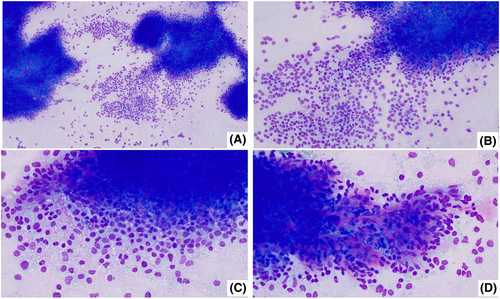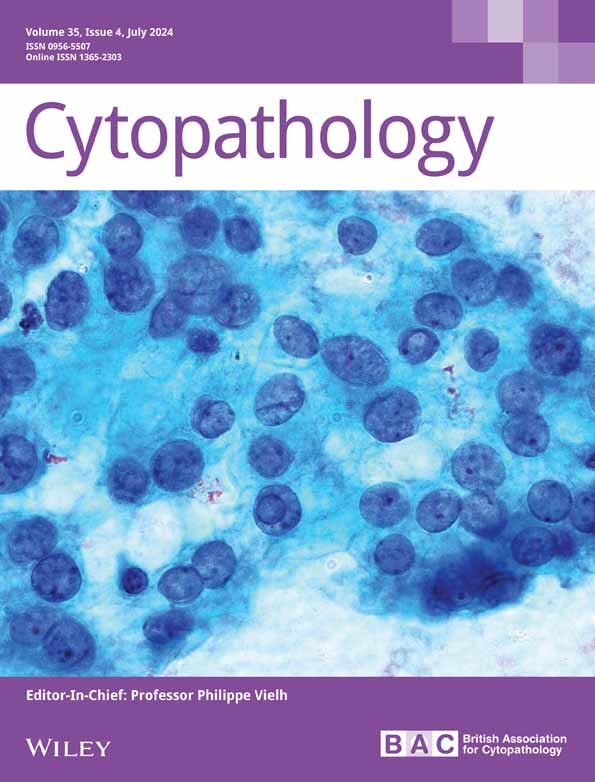A sub-hepatic nodule in a young female: Chase the case
Graphical Abstract
Sertoli–Leydig cell tumours (SLCTs) are rare, mixed sex-cord stromal tumours composed of varying proportions of both Sertoli and Leydig cells, which account for <0.5% of all ovarian tumours. The cytomorphologic features of SLCTs are not well described in literature. Herein, we describe the cytomorphologic features of an SLCT at an uncommon metastatic site in a young female.
Sertoli–Leydig cell tumours (SLCTs) are rare, mixed sex-cord stromal tumours composed of varying proportions of both Sertoli and Leydig cells, which account for <0.5% of all ovarian tumours. The cytomorphologic features of SLCTs are not well described in literature. Herein, we describe the cytomorphologic features of an SLCT at an uncommon metastatic site in a young female.
CONFLICT OF INTEREST STATEMENT
None.
Open Research
DATA AVAILABILITY STATEMENT
Data available from authors on request.





